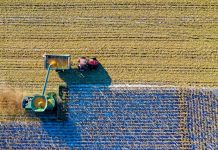There’s a lot to think about. Vast solar systems, stars, planets and black holes all come to mind and that’s not even making a dent.
When you put things in perspective, the Earth is a tiny spec floating in a large atmosphere. We are one of a kind, the only planet with living conditions perfectly suited to inhabit humans, animals and plants that all call this place home.
But what happens when the Earth is no longer habitable, where will we all go? Our curious nature is something that fuels these questions and leaves us searching for answers, leading to vaster space exploration and expands the reality of living on another planet.
The idea of one day living on Mars has been floating around since the early days of the moon landing. As Earth’s neighbour, this little red planet remains the most logical one to colonize first as it’s the closest.
According to NASA, this day could be closer than you think. Progress is being made into discovering ways that we can send humans to first walk, and eventually live on Mars. This challenge is one of the greatest challenges humanity has ever decided to pursue. Only 12 people have set foot on a planet that isn’t Earth, those being the astronauts of the Apollo missions.
Unconcerned by this, NASA has said that they can afford to put a small crew on Mars by 2039. Other countries including China, Japan, United Arab Emirates, India and Europe have also stated that they are working on a way to get to there, already sending robots and probes to orbit and collect data to analyse.
Placing humans on this mysterious planet would be a bigger achievement than sending a robot, as initially everything we would need to live and survive on Mars would have to be transported there by us. This includes necessities like air, food, water, radiation shielding and tools.
The weather itself also poses a problem as the sun pumps out enough radiation to qualify for dangerous exposure levels. The wind also carries dust from the planet’s dry and rocky surface. This dust is called perchlorate and is a toxin that doesn’t agree with the human body, which could cause problems for humans living in this atmosphere.
These facts have not stopped scientists from researching and predicting how we could overcome and create a solution to these harsh living conditions.
A display of what living quarters would look like has been created in London and shows the size and type of house the first colonisers would live in if they moved to the Red Planet.
The houses are shown to be built underground connected by a network of tunnels and with only a small amount above the surface. The homes would be small and shaped like an igloo with walls that are 12ft thick in an effort to shield residents from harmful rays.
While these ideas sound promising, creating a colony on a foreign planet will take a lot of science and technology. Although it is a possibility in the future, living on Mars is still a while away so you can rest easy knowing life here on Earth not going to change… for now anyway.

![5 Reasons You Should Travel Alone Airplane [image source: chau nguyen/ http://thedevilhatessweatpants.blogspot.com.au ], crowd ink, crowdink, crowdink.com, crowdink.com.au](https://crowdink.com/wp-content/uploads/2016/08/Chau-airplane-218x150.jpg)




























![5 Reasons You Should Travel Alone Airplane [image source: chau nguyen/ http://thedevilhatessweatpants.blogspot.com.au ], crowd ink, crowdink, crowdink.com, crowdink.com.au](https://crowdink.com/wp-content/uploads/2016/08/Chau-airplane-100x70.jpg)


